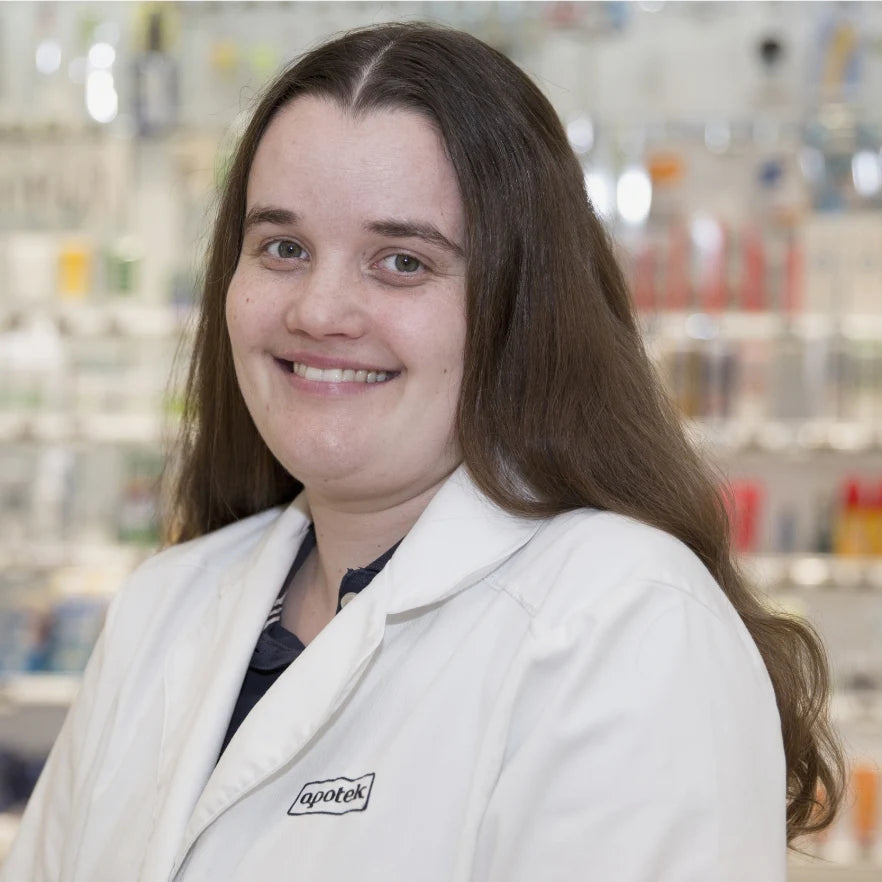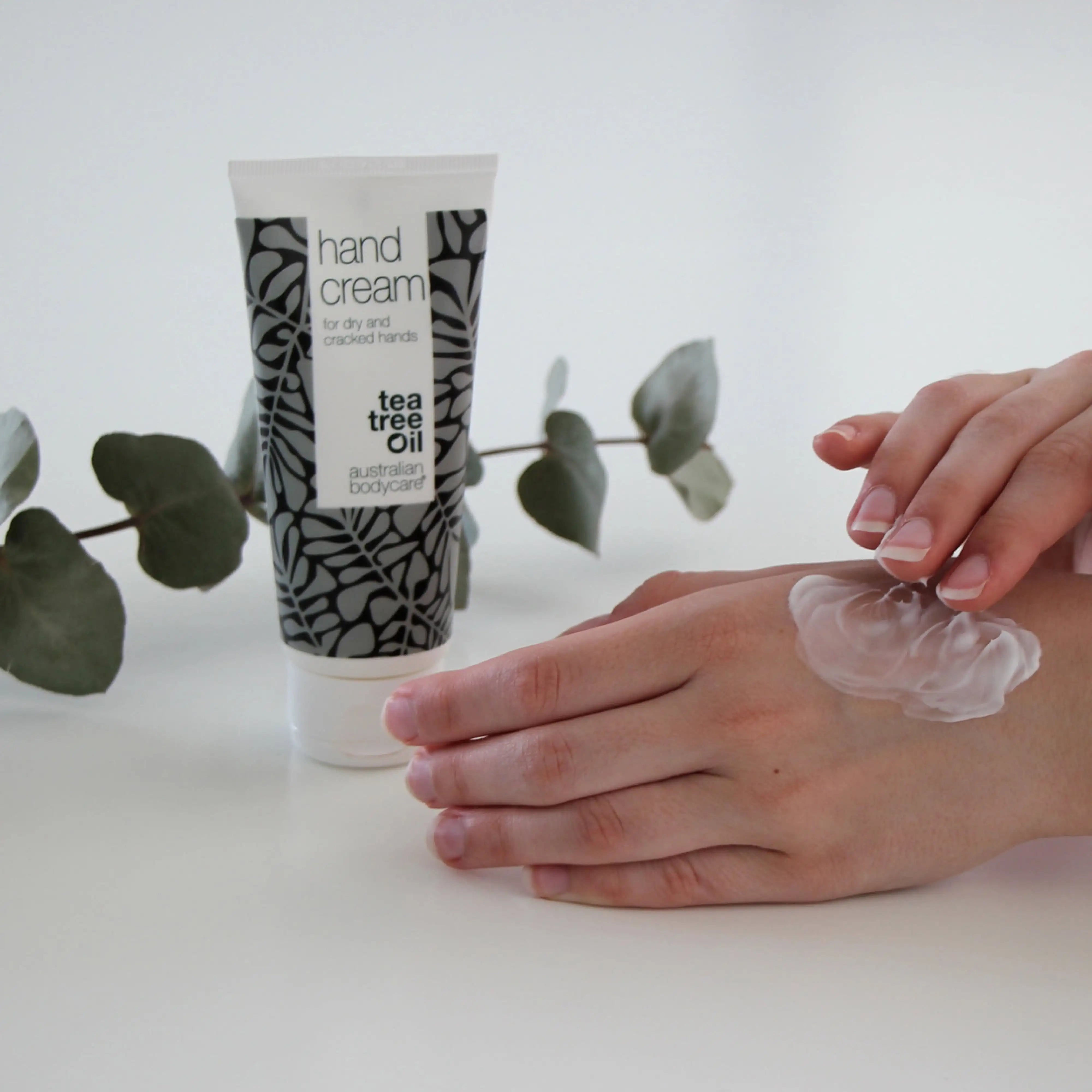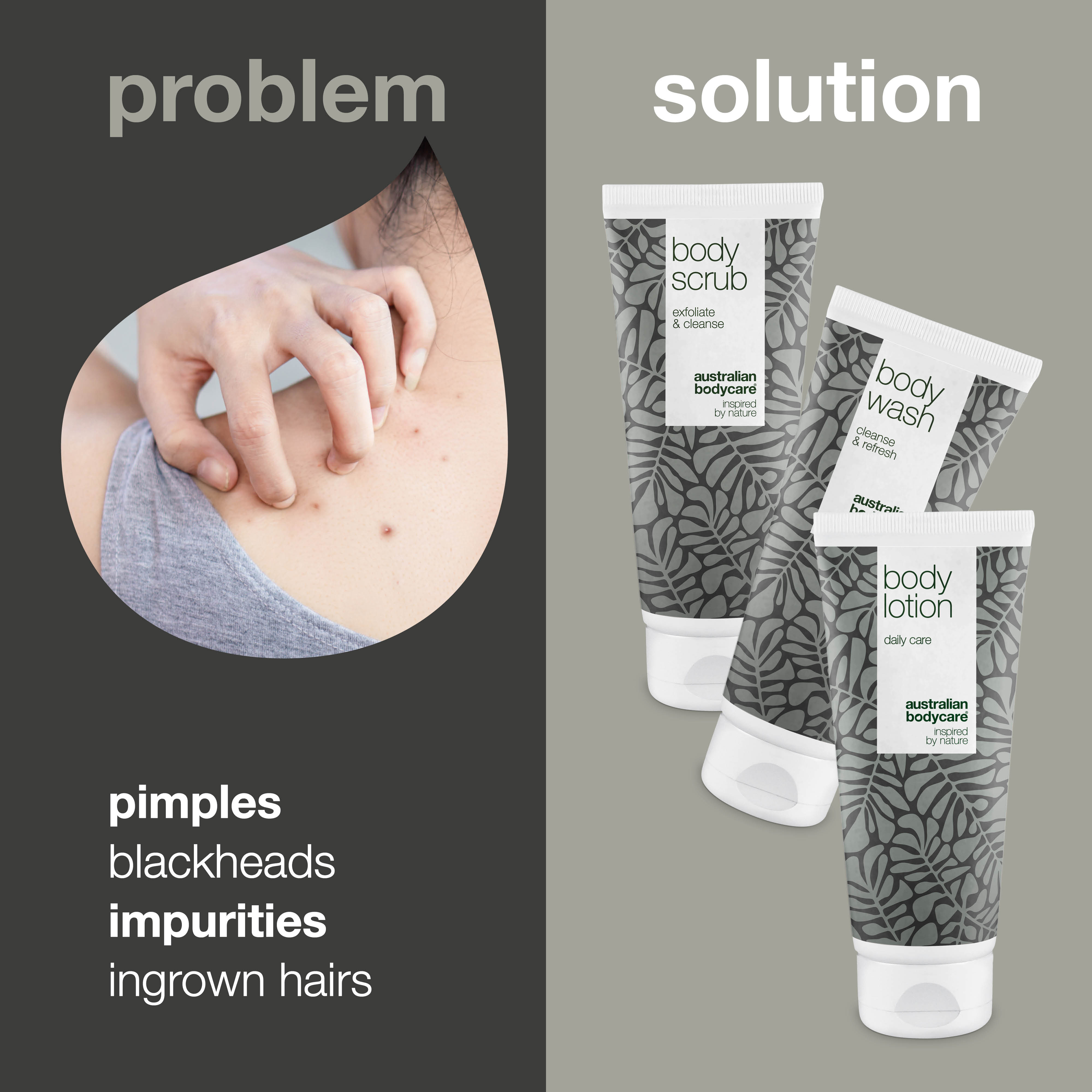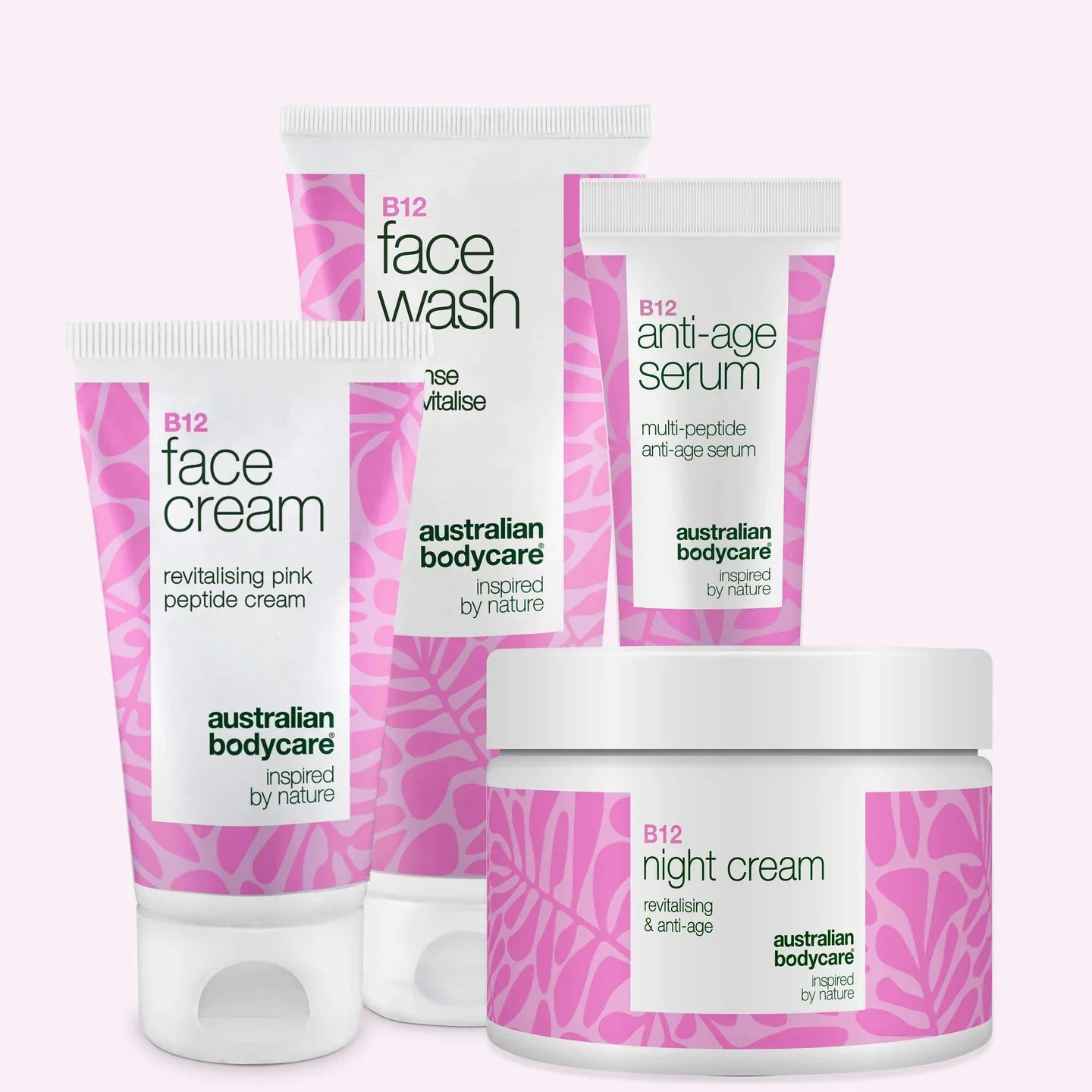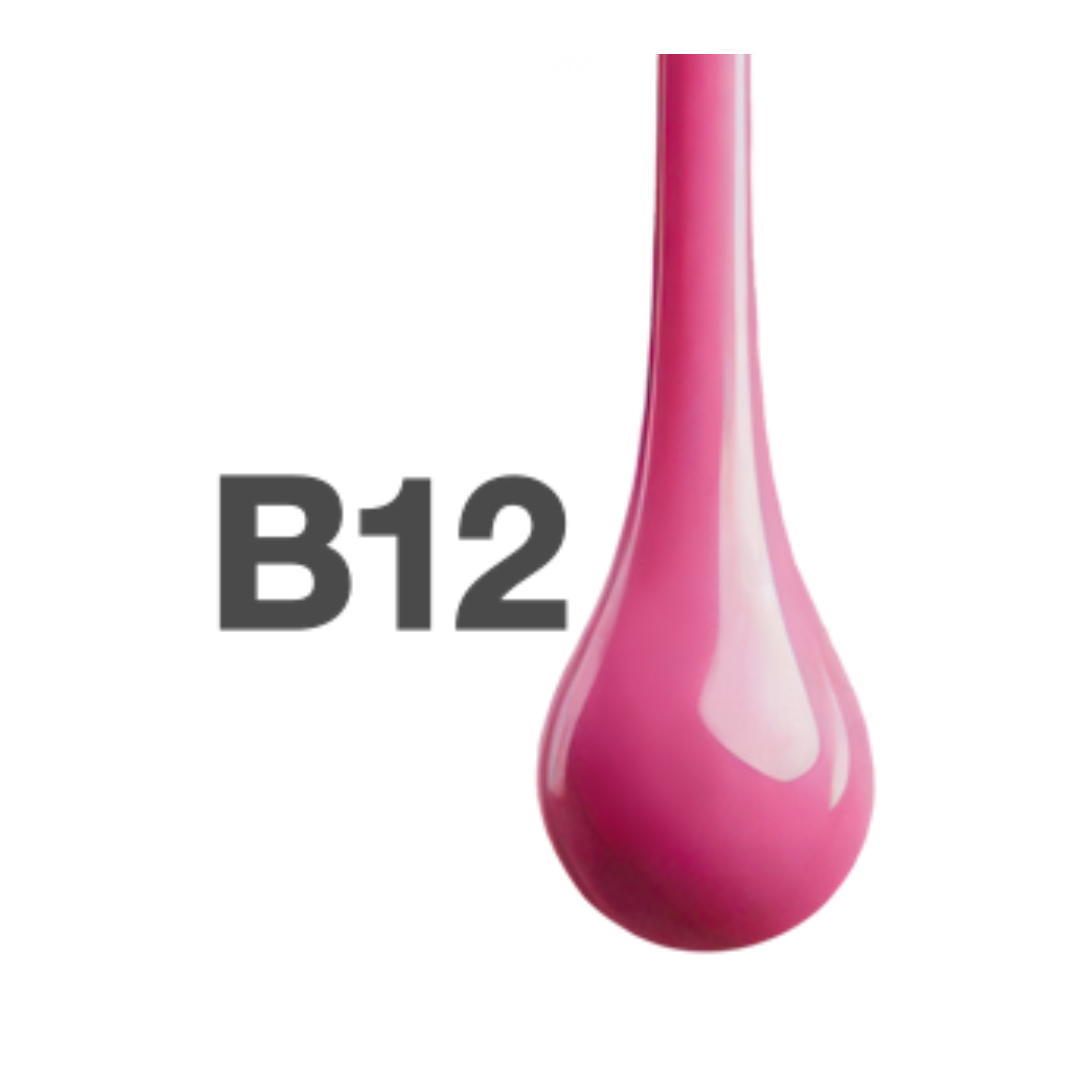Spots on your chest - how do you get rid of them?
Are you tormented by spots on your chest? Then you are not alone. A large number of men and women are bothered by these annoying spots on the chest. In this article, we share why they occur and what you can do about them.
Table of contents
What are spots on the chest?
Spots often appear on the face, but you can also easily get them on your chest. Spots on the chest, just like the face and on the rest of the body, are a red swelling in the skin with an underlying yellowish substance which seem to occur just when you least want to see them.
Often they can be embarrassing and in severe cases can cause social anxiety. Spots on the chest are a big problem for lots of people and can make the sufferer not to want to reveal their skin at the swimming pool or on the beach in the summer. They can be a major problem for some in both everyday life and socially.
Spots on the chest are caused by impurities in the skin pores and sebaceous glands which result in inflammation of the skin and redness. They appear as a red swelling, accompanied by yellow puss and are a sign of infection or imbalance of the skin in the area effected.
Understanding of how to deal with spots on the chest requires an understanding of why they occur. Below we give an insight.
Why do you get spots on your chest?
What are the causes of spots on the chest? There may be several reasons why spots pop up on your chest.
Large pores and overproduction of sebum
Spots occur when dirt, grease and dirt clog pores. It forms a small black dot, also called a blackhead, which develops into a full-blown spot. Spots are often seen on the chest because the skin here has large pores – so more dirt, sweat and bacteria can accumulate.
Spots on your chest are also caused by an overproduction of sebum. Sebum is found naturally in the skin, and it is a substance that helps to keep the skin moisturised and healthy. It is a liquid of cholesterol, fat and waxes that lubricates skin and hair from the inside so your skin remains supple and hydrated.
But if your body is making too much sebum, the sebaceous glands can't keep up. The exits from the sebaceous glands become congested and the sebum cannot be transported away. In this way, it accumulates, because production just keeps going. The sebaceous gland weakens and fails. The sebum stagnates with bacteria in the gland which becomes irritated. The irritation causes inflammation just under the skin resulting in a red and sore spot.
Hormonal imbalance
Spots on the chest often result from a hormonal imbalance, for example, from stress or pregnancy or by your diet
It is not, however, scientifically proven that chips and other fatty foods can cause the formation of spots, even if you eat a healthy and varied diet with lots of nutrient-rich ingredients, you can also be affected by spots on your chest.
However, some foods have a higher propensity to cause spots on the chest or elsewhere on the body in some people. This is particularly true of milk and milk products, because, like hormones, they can alter the production of sebum. Cow's milk is rich in bioactive molecules and hormones, which may cause your skin to react and cause small red and irritated spots on your chest.
Who is most often affected by spots on the chest?
Spots on the chest can be a big problem. Affecting both men and women of all ages. Often, young boys and girls at puberty get spots on their chests because the body's hormone production increases in these years creating an imbalance in the hormonal system. This affects the production of sebum, making the skin more oily and more susceptible to spots.
However, spots on the chests of men and women are also a widespread problem that is not limited to the teenage years. Especially for men and women who do a lot of exercise. Pores that become clogged with sweat and dirt, may be at more at risk of developing into spots on the chest. Spots on the breasts in women are also often associated with pregnancy because the hormonal changes that happen at this time.
Symptoms of spots on the chest
It is not difficult to tell if you have spots on your chest. Spots on the chest appear as red marks with a yellowish and inflamed center. They can be large and deep containing yellowish secretion. The spots can appear on the ribs as well as between the breasts.
Often the spot can feel sore from the inflammation, but not always. The inflammation and symptoms can keep reoccurring over days or weeks – depending on the depth and degree of inflammation.
What treatment is there for spots on the chest?
Spots on the chest can be a real nuisance, but fortunately you can treat the spots effectively with the right routine.
Keep skin clean
One of the main methods of getting rid of spots on the chest is to keep the skin clean and free of bacteria. This is especially true if you have played sports and sweated a lot. However, do not overwash the skin as equally this can also cause irritation and spots.
With Australian Bodycare's complete set of Body Scrub, Body Wash and Body Lotion, you get all the products you need to deep cleanse your skin. All three products contain the natural ingredient Tea Tree Oil, which effectively counteracts bacteria and places a protective membrane over the skin, making bacteria difficult to penetrate pores, and making it harder for spots to develop.
Use the body scrub to effectively cleanse the skin of dead skin cells, dirt and excess oil, so that all impurities are removed. The scrub also moisturises the skin to feel soft, while the natural allantoin relieves itching and promotes the skin's natural cell division. Apply with gentle circular motions and wash with running water. The Body Scrub is the first step to getting on top of spots on the chest. Then wash the skin in the mild Body Wash, which gently washes the skin clean and makes it smooth and supple. Finish with Body Lotion, which lays the last protective layer preventing new bacteria reaching the skin.
Medication treatment
Good day-to-day care routines are often an effective treatment for combating spots on the chest. However, if your problem is very pronounced, medical treatment may be necessary. In which case a tablet or cream treatment with stronger agents may be necessary.
If this is the case, talk to your doctor, who may refer you to a specialised dermatologist. He or she can best examine your skin and from there assess what the best treatment might be.
Prevention of spots on the chest
What can I do to stop and avoid spots on my chest? In fact, there is quite a lot of preventative action that you can take to avoid getting spots. But sometimes even the best skin care routines and healthy diet are not enough if your hormones are not in balance. Here are a few tips for preventing spots on your chest.
- Do not take too long and hot baths. Hot water feels great on your body, but it also dries out the skin, which in turn stimulates your skin to produce moisture and sebum.
- Always wash thoroughly after you have been playing sports or have sweated a lot. Sweat can linger on the skin, like bacteria and give you spots on your chest.
- Eat a healthy and varied diet with lots of vitamins and minerals.
- Avoid stress by planning your time better. Stress can boost hormones and cause spots.
- Choose loose-fitting cotton clothing that your skin can breathe in.
- Don't squeeze your spots. It just makes them hurt more and can lead to nasty scars, irritation and spread of bacteria, causing even more pimples.
